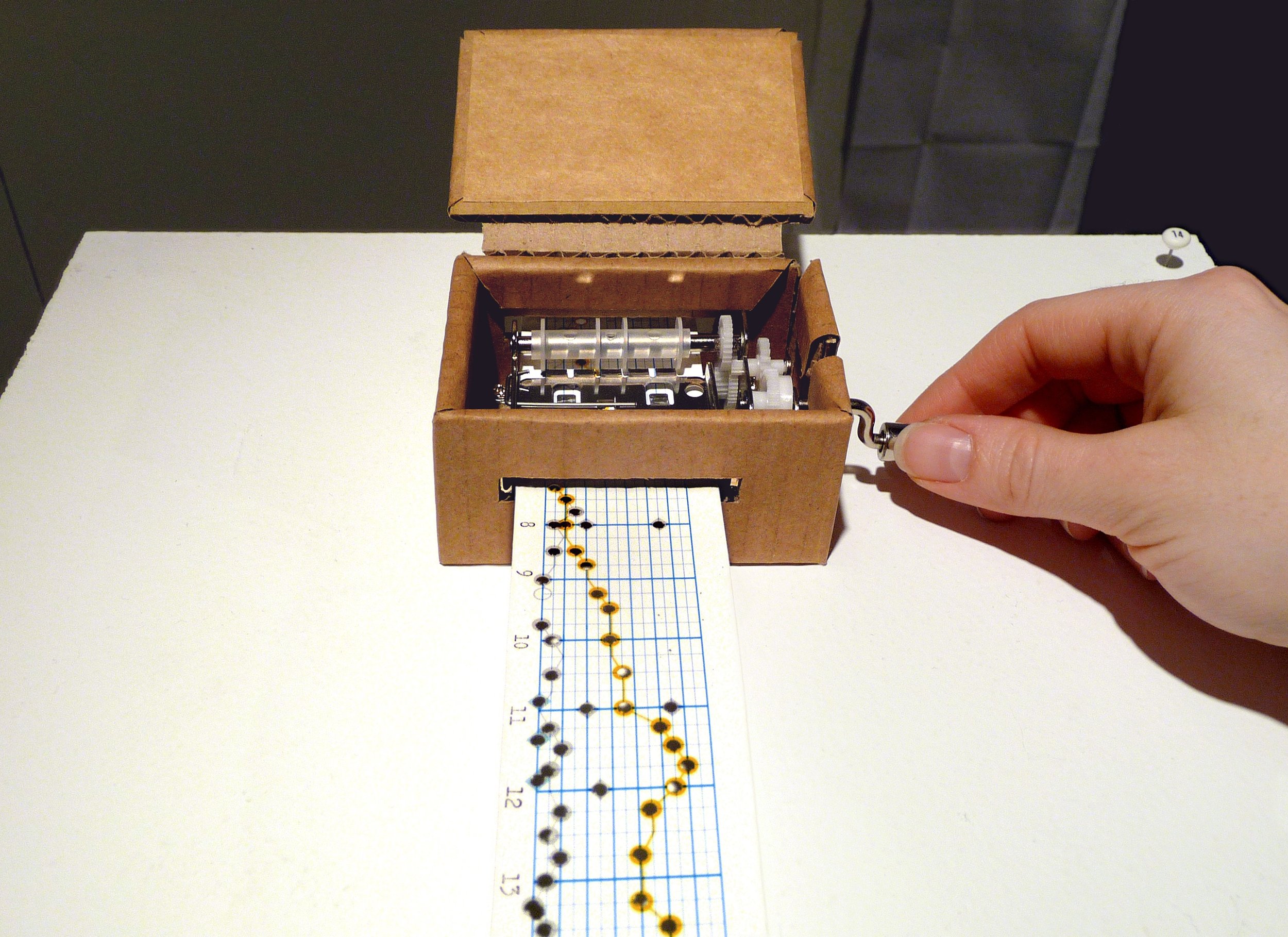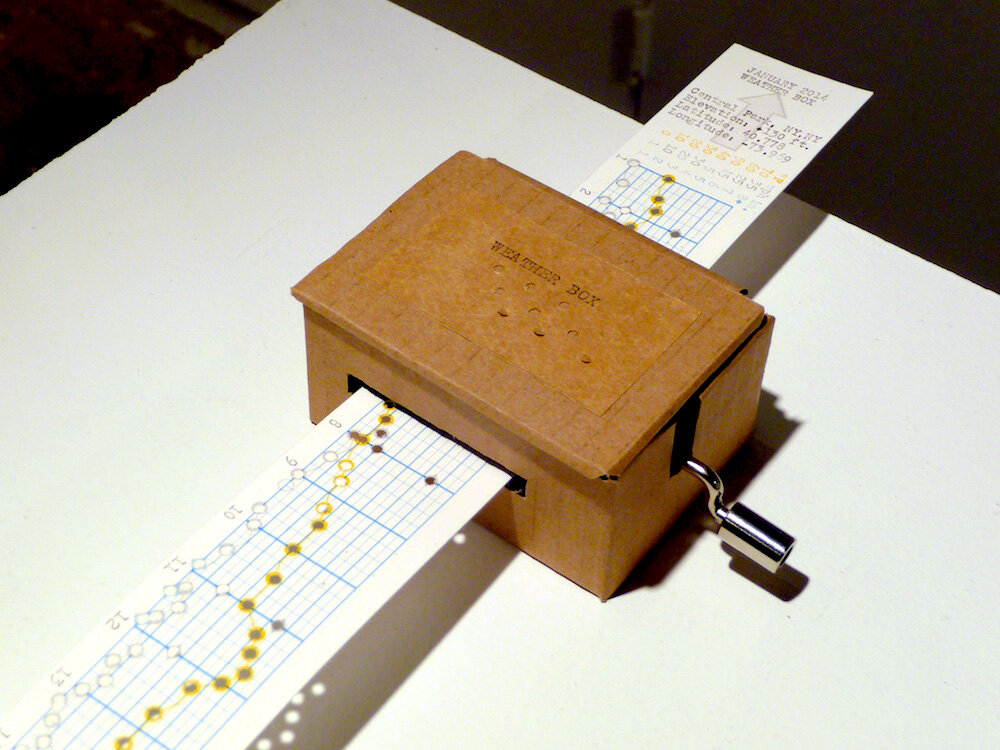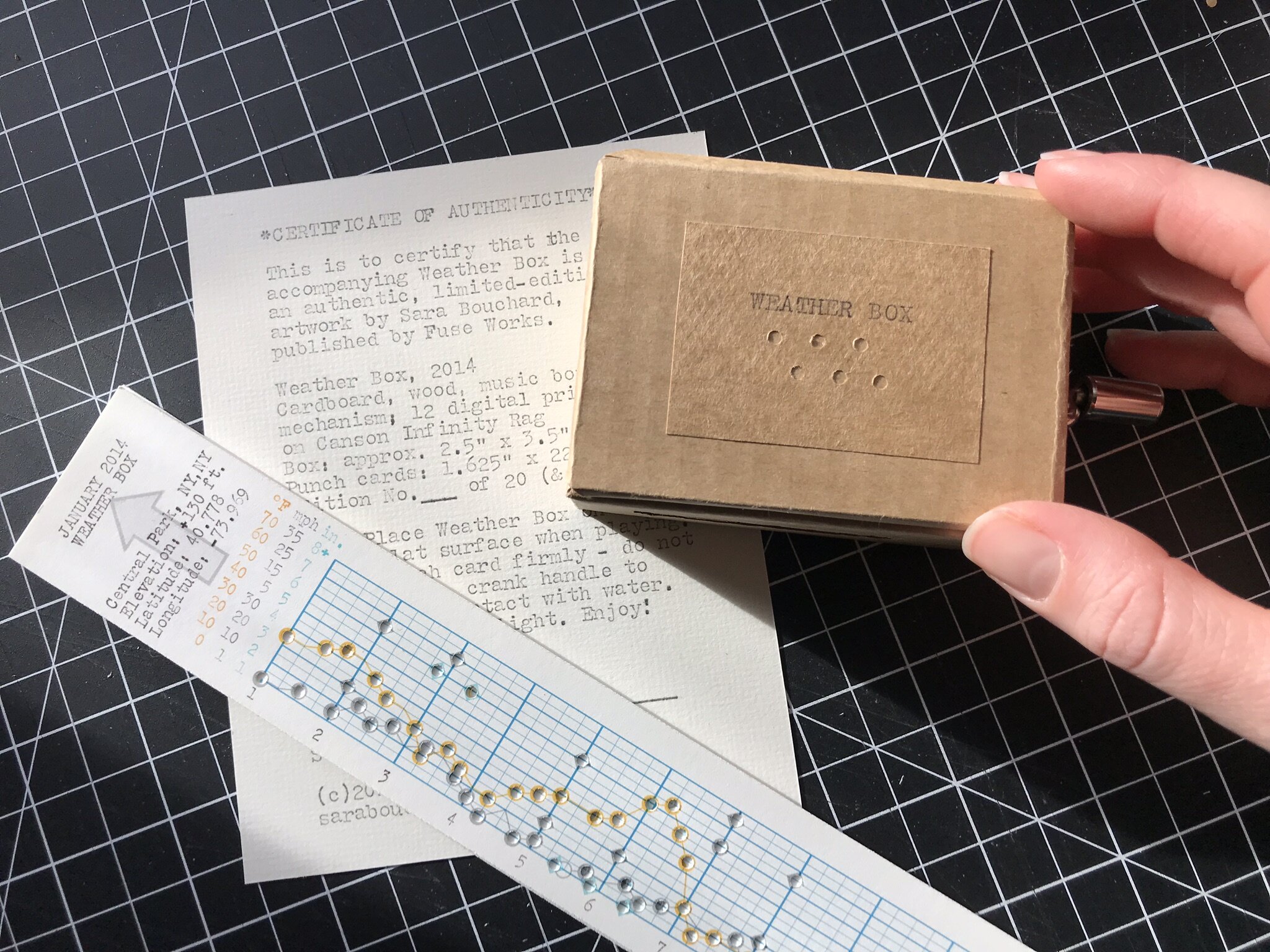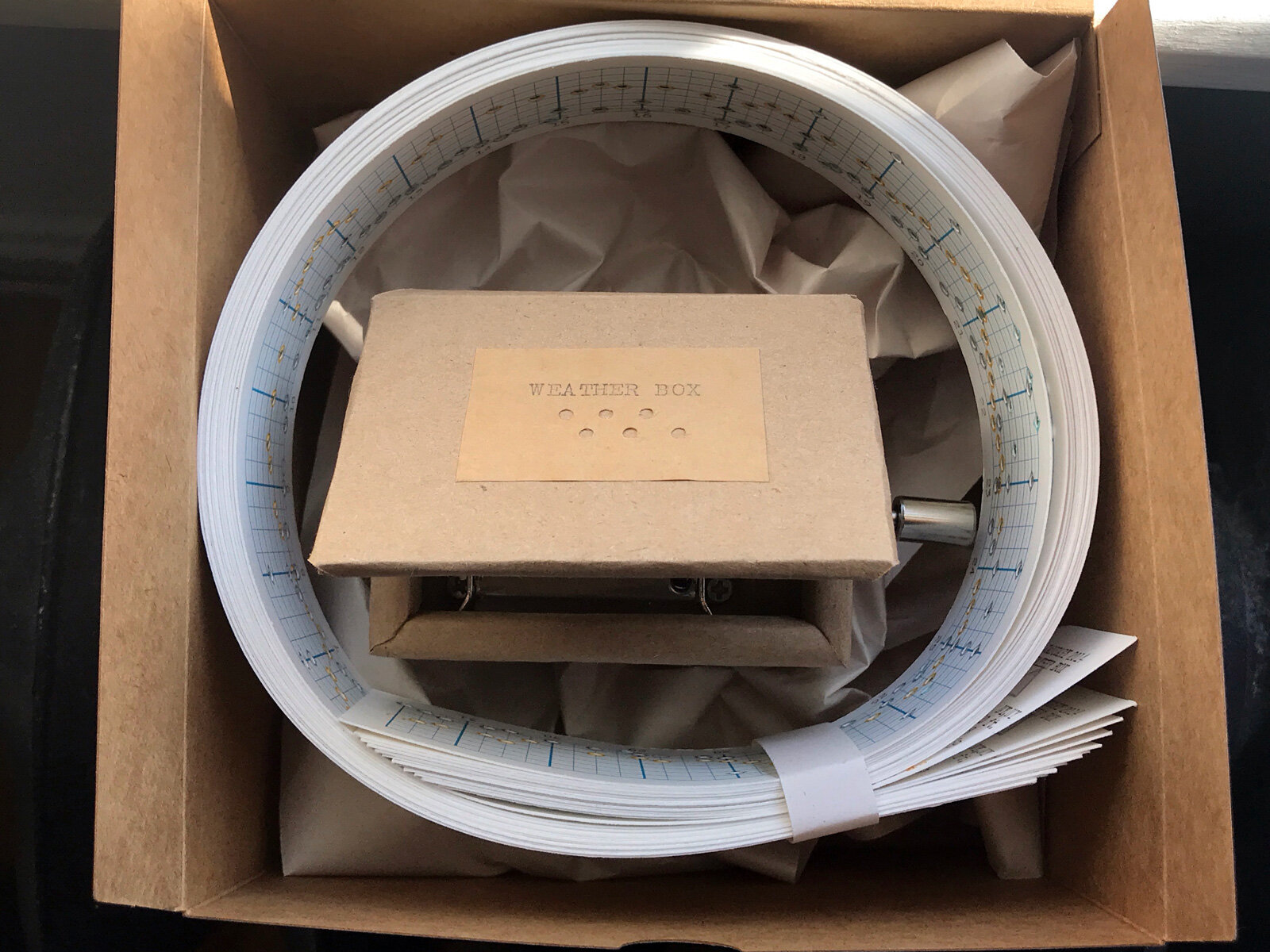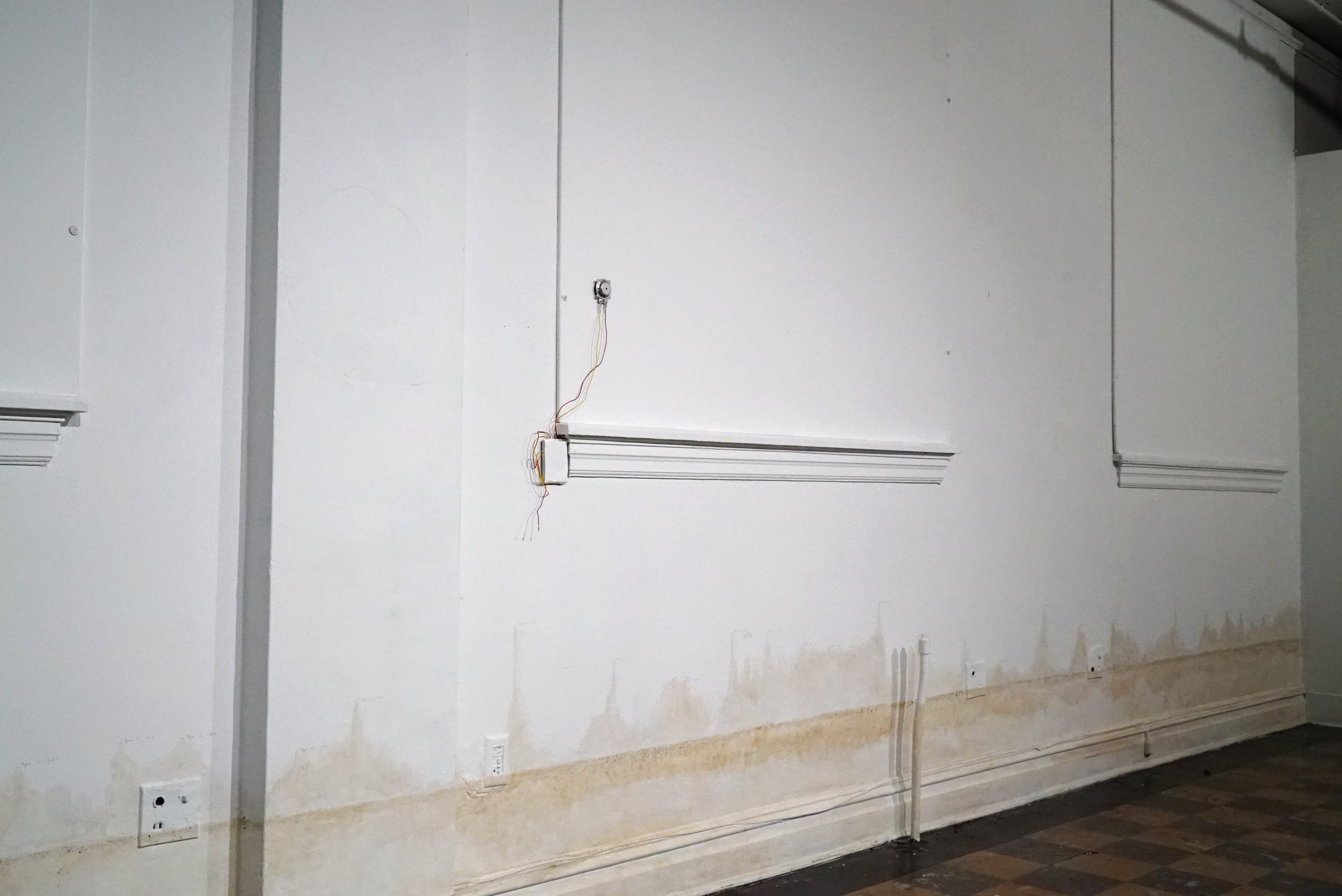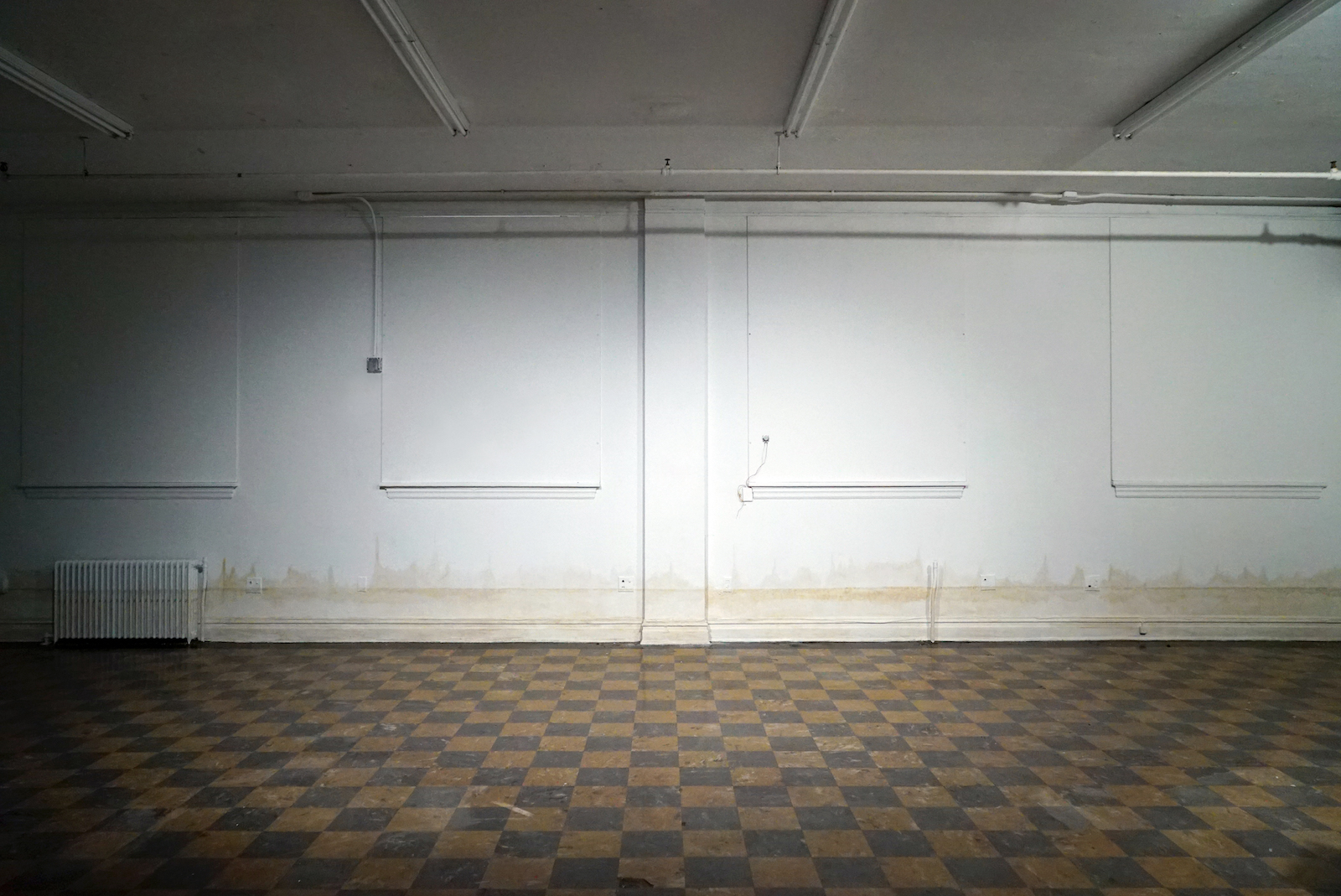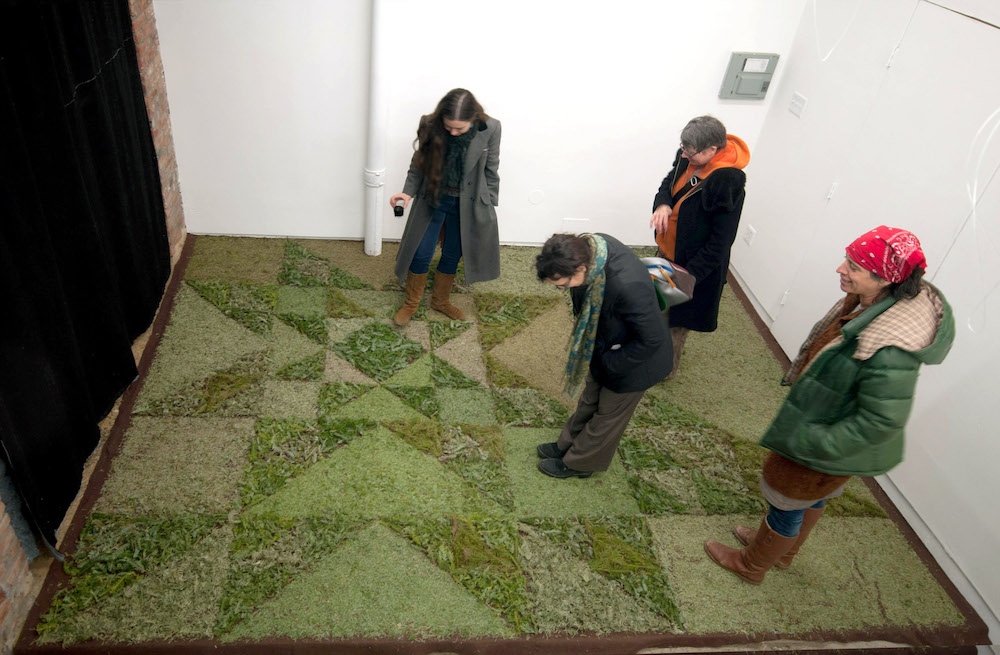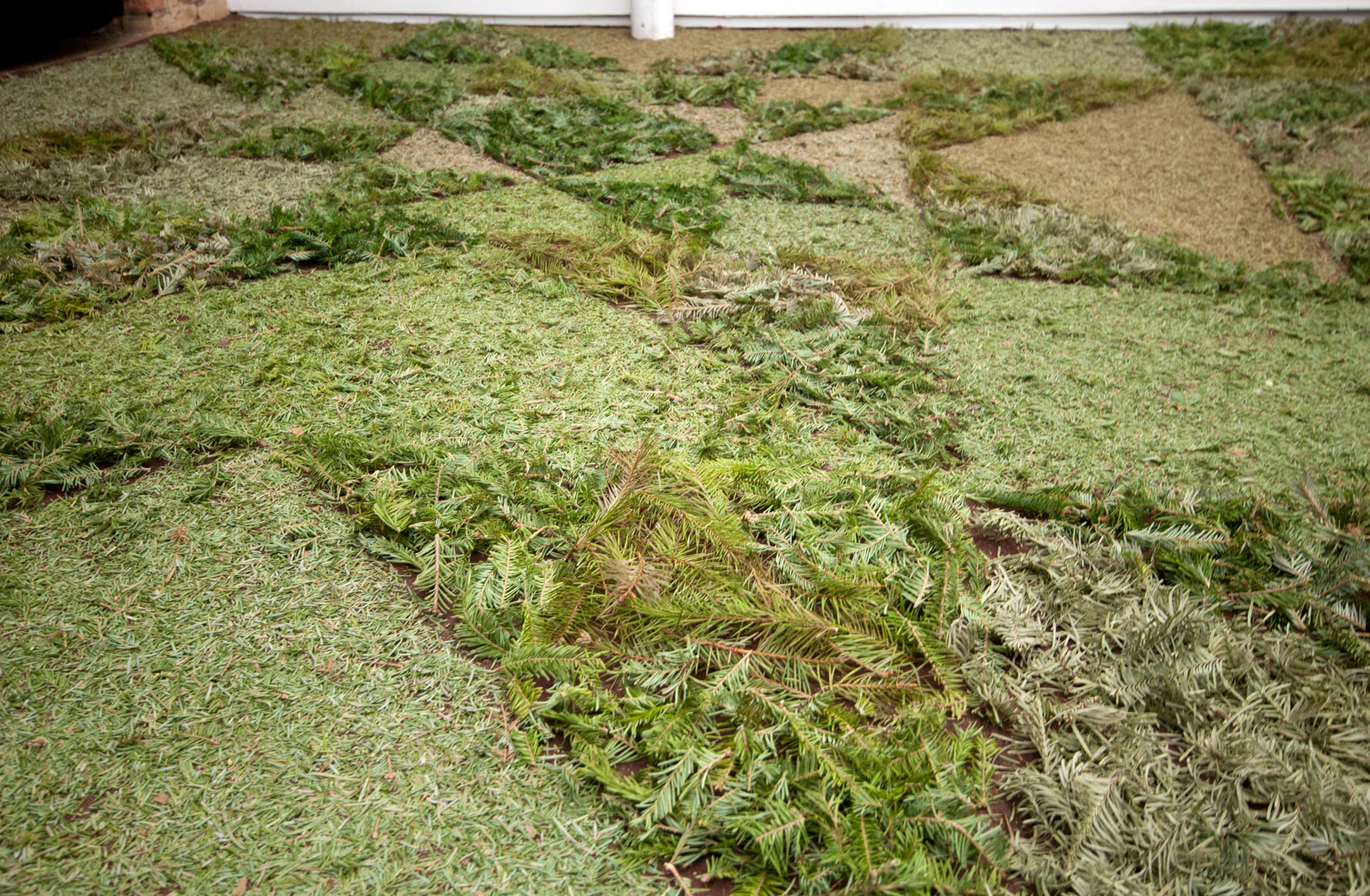Forest for the Trees is a sound environment which responds in real time to sensors placed in the trees outside the gallery. Tree branch movement triggers sonic shifts inside the gallery, where audio samples of organic matter are amplified through wood and found materials suspended in space. As the piece evolves, tension arises between equilibrium and disruption while shifts in scale emphasize the rift between human and arboreal perspectives and the precariousness of our position amidst the current climate crisis.
In a nod to David Tudor’s seminal sound installation Rainforest IV (1973), Bouchard has attached transducers, which convey sound through vibration, to hanging objects in the gallery. In this case, the objects and sounds consist almost entirely of fallen tree matter which the artist collected locally. Outside the Anderson, vine-like extension cords snake into the trees, powering two Arduino microcontrollers in the branches. Each Arduino collects data about its spatial orientation at a rate of 10 times per second from an onboard accelerometer and transmits this data over WiFi to the computer in the gallery. Using the software Sonic Pi, Bouchard has written computer code to trigger audio samples at different volumes, durations and playback speeds based on the incoming data. More tree motion, due to wind, will create a denser sound in the gallery while less motion will create a sparser effect.
Besides exploring creative coding and sound technologies, Bouchard in her current practice pursues scientific discussion and collaboration with local ecologists. While she has sonified existing environmental data in previous works, Forest for the Trees began with the hope that using her own sensors to capture raw data would increase the scientific value of her artistic work. Ironically, the piece collects an enormous amount of data from a tiny sample without permanently logging the information, thus contributing very little to the scientific community. Bouchard also questions whether the work is in fact “for the trees” as the title suggests or simply another example of human exploitation of nature. In titling the work thus, Bouchard acknowledges the dubious nature of these ineptitudes and comments on the insufficient action of governmental policies to fight climate change: being unable to “see the forest for the trees.”
The work was commissioned with an Excellence in Adjunct Research grant from VCUarts and The Anderson gallery. During the month-long exhibition, improvisational performances occurred in conversation with the installation.
Sat. Sept 16, 4pm - Performance by Alan Biller and Sara Bouchard: guitar, effects, loops, voice and live coding.
Fri. Sept 22, 5pm - Performance by Kinetic Imaging MFA students and alumni Sara Bouchard, Chrystine Rayburn, Lindsey Arturo, Kaitlyn Paston and Yvonne LeBien: bass clarinet, natural materials, voice, guitar, movement.

































